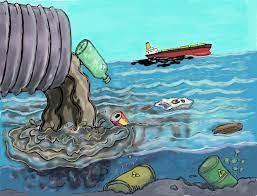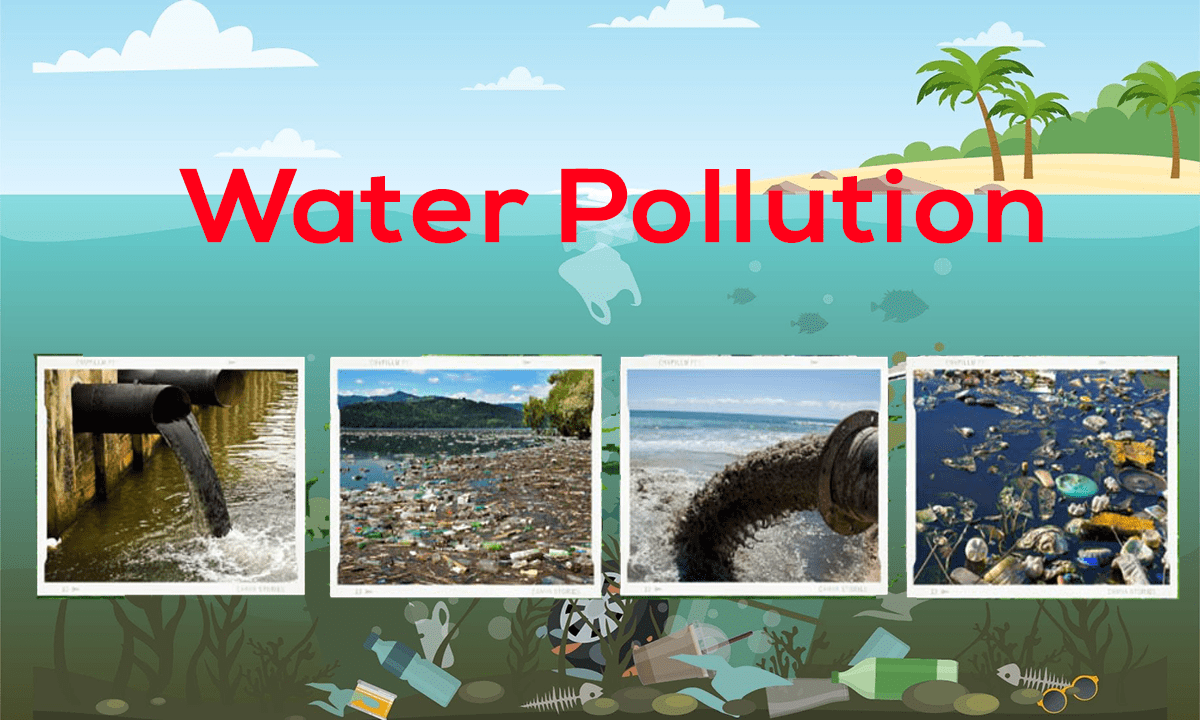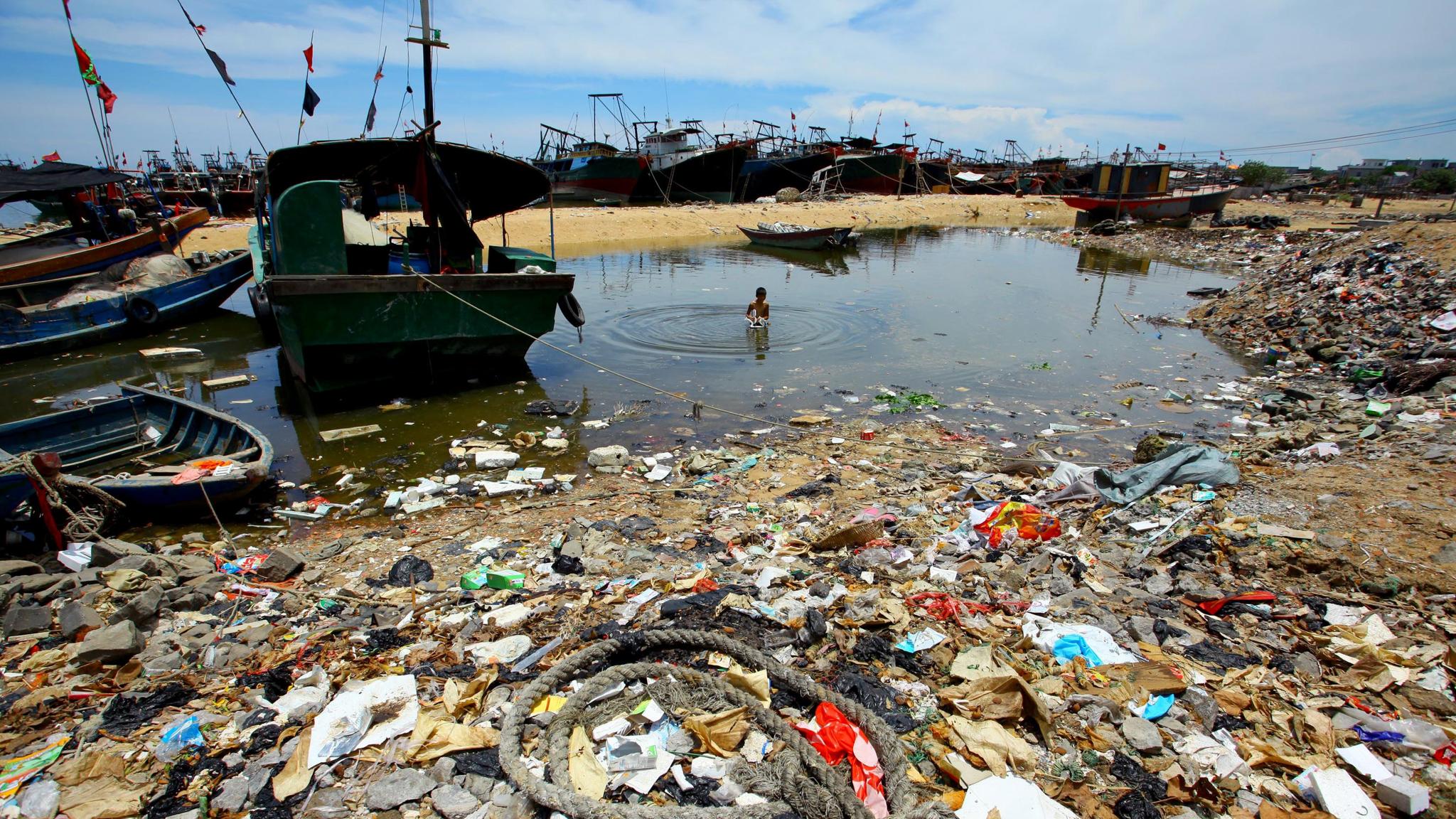Courtesy : www.environmentalpollutioncenters.org/
Water pollution
Many of the chlorinated solvents commonly used in industry (such as PCE, TCE, 1,1,1-TCA) are examples of such chemicals polluting our waters exclusively due to human activities. Another example is MTBE (Methyl-tert-butyl-ether), a gasoline oxygenate that is currently banned in the U.S. Regardless of their provenance, the chemicals or biological agents causing water pollution are generically referred to as water pollutants.The chemical and biological agents represent the main causes of water pollution and are generically referred to as water pollutants.
Any kind of water can become polluted, regardless of its size or location. This includes lakes from remote areas or huge water bodies and is due to the air transportation of pollutant particles and their transfer into precipitation water. The groundwater and surface water consist of swimming pools, ponds, lakes, creeks, rivers, seas, and oceans that may all become polluted at some point. Due to the quick diffusion and dissipation of contamination and the faster natural degradation processes, the bigger the water body is, the shorter the time required for naturally cleansing the pollution and recovery.
Types of Water Pollution
There are various types of water pollution based on the various causes of water pollution. Various classifications can be made, based on various water pollution causes:
1. The type of the water pollutants – based on this classification criteria, water pollution can be:
I) Chemical – when various chemicals are the water pollution causes. The following chemicals are the most common water pollutants:
- Crude oil and various petroleum products (including gasoline, diesel fuel, kerosene, motor and lubricating oils, jet fuel). These compounds are lighter than water and thus always sit on top of water forming sheens of “free product”. However, part of these compounds dissolve in water and, even in small amounts may be harmful and at the same time may remain unnoticeable by the eye.
- Fertilizers (including nitrates and phosphates) – while small amounts are useful to life, higher amounts of nitrates and phosphates in water are only beneficial to algae and harmful microorganisms and are poisonous to human and aquatic life. These contaminants cannot be seen themselves in water (as they do not form sheens or color the water), but their effects can. The typical effect of water pollution by fertilizers (usually through agricultural runoff) is the fast and abundant water growth.
- Chlorinated solvents (including TCE, PCE, 1,1,1-TCA, carbon tetrachloride, Freons) which sink in water (are denser than water) and are quite persistent and toxic. These compounds thus, cannot be seen by the eye, in contrast with petroleum products that are easily seen as sheens on top of water surface.
- Petroleum solvents (including benzene, toluene, xylenes, ethylbenzene)
- Other organic solvents and chemicals (such as acetone, methyl ethyl ketone, alcohols such as ethanol, isopropanol; or oxygenate compounds such as MTBE)
- Antibiotics and other pharmaceutical products;
- Perchlorate – perchlorate salts are used in rocket fuels, as well as many other applications such as fireworks, explosives, road flares, inflation bags, etc. This contaminant is usually associated with military bases, construction sites (when explosives are used). However, natural formation in arid areas may account for perchlorate in water, too (e.g., in Chile, Texas or California where natural formation of perchlorate has been observed)
- Trihalomethanes – these are usually byproducts of water chlorination and may pollute groundwater and surface water via leaking sewer lines and discharges. Examples of such compounds are: chloroform, bromoform, dichlorobromomethane;
- Metals and their compounds – of higher health risk are the organo-metal compounds which may form when metals from water react with organic compounds from water. Common examples include Hg, As, and Cr poisoning of water. Thus, if water is polluted with both metals and organic compounds the health risk is higher. And so is the effect of water pollution on aquatic life.
- Pesticides/insecticides/herbicides – comprise a large number of individual chemicals that get into water due to agricultural activities directly (by spraying over large areas) or indirectly with agriculture runoff. The insecticide DDT is a typical example of such type of water pollutant.
- PCBs – in spite of their recent ban, their ubiquitous environmental presence makes these contaminants usually associated with urban runoffs.
II) Radiological – when radioactive materials are the water pollutant causes.
III) Biological – when various microorganisms (e.g., bacterial species and viruses), worms, and/or algae occurring in a large number are the water pollution causes. This type of pollution is caused by decaying organic material in water, animal wastes, as well as improper disposal of human wastes.
2. The type (grouping) of the source of water pollutants:
POINT SOURCES
These are localized sources like an industrial process, a mining activity, etc. These sources are usually regulated so that the effect may be predicted and the impact minimized. However, accidental leaks and spills are an exception to that.
NON-POINT SOURCES
Sources of Water Pollution
The main sources of pollution are all resulted from the disposal of chemical substances coming from medical, industrial and household waste, chaotic agricultural fertilizers disposal and accidental oil spills that pollute the water to a large extent.
Examples of major water pollutants that affect the health of humans are:
- the numerous infectious agents (bacteria, viruses, and parasites) that contaminate the water through sewage, human waste, and animal excreta
- radioactive waste that contains highly toxic materials such as uranium, thorium, and radon. This waste is a major water pollutant resulted from mining activities, power plants or natural sources
- the chemical substances that contaminate the water. These chemicals can be either organic – pesticides, plastic, oil, detergents, etc. – coming from domestic, industrial or agricultural waste, or inorganic – acids, metals, salts – domestic and industrial effluents.





